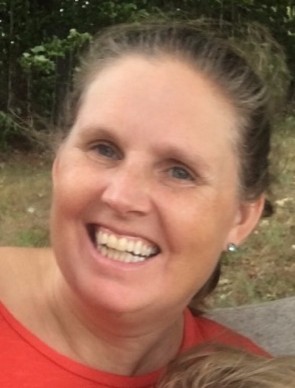Collaborating to Improve Performance Expectations
By Cindy Workosky
Posted on 2017-08-28
Jessica Tetreault and I were the only two middle school teachers at a recent conference, so we were paired to create a common performance assessment that we could both use with our students in the coming months. She volunteered to share an assessment on gravity that her students recently completed, as I was about to start my unit on gravity and scale in the universe. I didn’t know it then, but collaborating with Jess would improve the entire instructional sequence, not just the performance assessment. Working with Jess made planning easier, enjoyable, and more effective.
Jess explained her performance assessment. After discovering what their weight would be on different planets, students choose three planets to focus on: Earth, a planet they weigh less on, and a planet they weigh more on. Then they create scale, paper models of three planets. Finally, they write an explanation for why their weight changes using claim, evidence, and reasoning.
We then did a deep analysis of the performance expectation (MS-PS2-4) and how well the performance assessment matched it. Talking through the unit goals helped us understand the performance expectation more clearly, as we were able to share and reflect on ideas and discuss the three dimensions of the performance expectation. In addition, since Jess had just taught about gravity, she was able to share some concepts students struggle with, as well as give tips about how to challenge students who need a push. Through our discussions, we decided that we wanted the performance assessment to more strongly emphasize the effect of mass on gravity. So we tweaked it to include a graph showing the masses of the planets.
We would meet again in a few months; in the meantime, I gave the assessment to my students so we could evaluate the performance assessment. To be honest, I thought it would not work for me because I don’t exude as much enthusiasm as Jess does. I was worried that her personality was part of why the students got hooked.
As soon as my students began their work, though, I heard them say, “What?” and “Look at how much I weigh on Jupiter!” They were engaged. While they worked on their scale models of the planets, several groups sneakily tried to change the scale for different planets. When I asked why, they said because Jupiter was too big! They encountered a similar difficulty when they worked on their graphs showing the masses of the planets. Including Jupiter in their graph meant that they could barely show the masses of the inner planets on it. Through this performance task, the abstract concepts of gravity and scale in our universe became tangible to them.
When Jess and I met again, we examined our students’ work. We agreed that adding the graph had helped students understand the effect of mass on gravity. They could see the correlation between planetary mass and students’ weights. We then made one more significant change to the assessment for future use. To emphasize the concept of gravity as an attractive force, students will be asked to include force arrows between the planet and a person standing on the planet’s surface. These arrows must be at the same scale for all planets.
I feel so grateful to have met this talented teacher from across the state. We were able to improve the performance assessment through several iterations, all within one year! On my own, it would have taken several years to make these adjustments to an assessment. My students experienced a project different from one I would have created on my own.
A bonus is that we have stayed in touch as we work on other units. We discovered that we make a great team, with Jess coming up with the great ideas and me working through some of the details. Though we’ve only met in person three times, I hope we continue working together for years to come.

Kate Jesdale
Kate Jesdale is a seventh and eighth grade teacher in Burlington, Vermont. She began teaching middle school science in 1999. She has a geology degree from Carleton College and a master’s degree in teaching from the University of Massachusetts Boston. She loves teaching middle school students and is always looking for real-world application of science concepts and opportunities to collaborate with colleagues.
This article was featured in the August issue of Next Gen Navigator, a monthly e-newsletter from NSTA delivering information, insights, resources, and professional learning opportunities for science educators by science educators on the Next Generation Science Standards and three-dimensional instruction. Click here to access other articles from the August issue on assessing three-dimensional learning. Click here to sign up to receive the Navigator every month.
The mission of NSTA is to promote excellence and innovation in science teaching and learning for all.
Future NSTA Conferences
2017 Fall Conferences
National Conference
Disclaimer: The views expressed in this blog post are those of the author(s) and do not necessarily reflect the official position of the National Science Teaching Association (NSTA).


